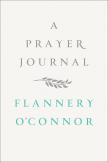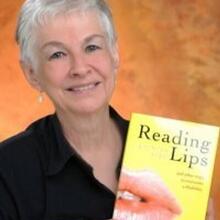The Mystic of Milledgeville
This little book provides an intimate portrait of the artist as a young Catholic woman who desires to become both a saint and a famous writer.
That’s the territory of Flannery O’Connor’s (1925–64) newly published book, A Prayer Journal, edited by W. A. Sessions, O’Connor’s friend and a scholar of her work, who found this journal buried among her papers for more than half a century.
Written in longhand in a marble composition book (a facsimile is included here), the first section of the book meditates on the cardinal virtues of faith, hope and charity and the four types of prayer (adoration, contrition, thanksgiving and supplication). O’Connor says that she is competent only in composing prayers of supplication. The rest of the book consists of prayers imploring God’s help.
The prayers show another side to O’Connor. Here she is not the hard-edged satirist stripping away at the faux piety of fictional silly old ladies or giving comeuppance to bratty kids. She’s filled with doubt about her writing and her religious aspirations. She wants to succeed as a writer but does not think for a second that she can do it on her own. “Dear God,” she writes, “I am so discouraged about my work.”
She sees herself as a cheese and asks God to make her a mystic. She says she is a moth who wants God to be its lover. She has an ecstatic, almost palpable desire to be the beloved of God. She prays for God’s grace and for the inspiration of the Holy Spirit. “If I could only hold God in my mind,” she says.
The only child of Roman Catholic parents, O’Connor was born in Savannah, Ga. Later, at 13, she moved to Milledgeville when her father died of lupus—a disease that also claimed her life when she was 39. During her brief career, she wrote two novels and 31 short stories, for which she received several major writing awards. After her death, her complete short stories (collected and published posthumously) received the National Book Award for fiction in 1972.
O’Connor wrote this prayer journal from 1946 to 1947 while she was a student at the Iowa Writers’ Workshop. The book could be called a faith journey. But O’Connor arguably would disapprove of that term. The inherent pretentiousness of the words might elicit in her what she describes as a “faint nausea,” which comes on her when she confronts insincerity.
If there is one defining characteristic of O’Connor’s life and writing, it is her disgust at pretension. In these prayers, she scrutinizes the superficial side of herself and her world. It could be argued that O’Connor kept this journal as a way to purge herself of every vestige of affectation.
She was also hard on her perceived writing faults. O’Connor composed, revised and cut paragraphs and pages from this journal when she thought they were poorly expressed: “Tore the last thing out…,” she says. “It was worthy of me all right; but not worthy of what I ought to be.”
She wrote these prayers partly because ordinary religion had begun to leave her cold. The rosary and other everyday prayers had become rote to her, “a few memorized prayers babbled over once lightly.” She could not concentrate at Mass even after receiving communion: “[T]houghts awful in their pettiness & selfishness come into my mind even with the Host on my tongue,” she says.
She portrays herself as weak, insipid, stupid, cowardly, mediocre, lazy, uncharitable or lacking in faith, imagination and talent. She says she does things in a “picky fish bone kind of way.” It’s hard to believe that she would later be considered one of America’s greatest authors, up there with Faulkner and Hawthorne, whose themes play out in O’Connor’s own fiction—albeit enhanced by her brand of irony.
Although this is not a journal about writing, it does refer to writers she finds inspiring—especially Georges Bernanos (The Diary of a Country Priest) whose influence can be seen here. O’Connor offers a few tips about the craft of writing, including this one, which is central to her work: “To maintain any thread in the novel, there must be a view of the world behind it & the most important single item under this view of [the] world is [a]conception of love—divine, natural, & perverted…. [W]hen a view of love is present…, no more need be added….”
Seeded through these prayers are O’Connor’s musings on her drive to write. When her writing goes well, she ascribes her success to God: “Don’t ever let me think, dear God, that I was anything but the instrument for your story—just like the typewriter was mine.” Above all, she prays that her work be permeated by Christian values. The position, she says, is not an easy one. Nor is it an easy one to make transparent in fiction or, for that matter, in fact. But as she suggests in this compelling journal, she cannot settle for anything less.
This article also appeared in print, under the headline “The Mystic of Milledgeville,” in the December 23-30, 2013, issue.








